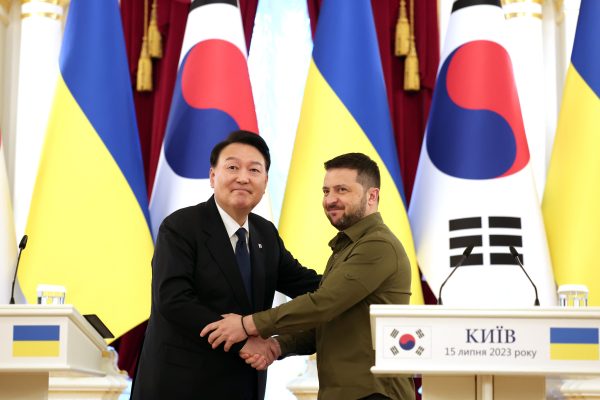A precedent in global aerospace dialogue was set a few months back when it was revealed that Argentina was leaning towards purchasing pre-used F-16 fighter jets from Denmark. The aircraft it beat to the punch? Not yet, because the second player seems to be regaining his positions again.
The firmness in Argentina’s decision to lay hands on 24 Danish F-16s, once crystal-clear during the middle and latter part of last year, has since become murkier. The initial enthusiasm has ebbed despite the bold cues sent by Washington.
Interestingly, Washington managed to sway London, who rather ungrudgingly gave the green signal for the F-16s to be sold to Argentina. Keep in mind, this wasn’t an easy feat, considering the long-standing contention between Britain and Argentina over the Falkland Islands and the subsequent arms embargo.
But Washington wasn’t done. It further sweetened the deal for Buenos Aires by promising to equip the F-16s with superior weaponry. The Americans assured Argentina that their F-16s would carry AIM-120 AMRAAM air-to-air missiles. They also threw in precision-guided munitions like the JDAM family.
However, Argentina’s dilemma revolves more around the finances than the specifications of the jet. Renowned for struggling financially, Argentina direly needs a comprehensive upgrade and modernization of its air combat fleet, which currently consists largely of Dassault-Breguet Super Etendards.
Furthermore, the U.S. seems in no hurry to pull its F-16 offer off the Argentine table. Argentina’s delay, however, still enables the Indian F-16 rival—the TEJAS—to remain part of the discussion. For starters, the Indians proposed a superior and more cost-effective new model, armed with top-notch and competitively-priced weaponry.
In addition, London’s potential veto, which might have been a stumbling block, was skilfully avoided. TEJAS, though employing Martin Baker ejection seats—an original British product—managed to sidestep a possible prohibition from London by opting for Russian K-36 ejection seats for the Argentine units. And the K-36s are certainly on par with their British counterparts, being used in aircraft such as the Su-30 and Su-57.
In another blow to Washington, Argentina stayed notably quiet as Hindustan Aeronautics Limited [HAL] and Argentina’s Ministry of Defence inked a letter of intent in June 2023. This intent signals Argentina’s plan to acquire utility helicopters for its military. Adding a significant notch to this evolving relationship, Argentina’s Defence Minister, Mr. Jorge Taiana, paid a visit to HAL’s facilities in Bangalore.
At the ceremonial signing event hosted at HAL’s headquarters, the attendance of Argentinian officials and HAL’s Chairman and Managing Director, Mr C B Ananthakrishnan, stood as a testament to the growing ties. The Argentinian delegation was given a tour of HAL’s Light Combat Aircraft and Helicopter Divisions, offering them a glimpse into the workings of the aerospace giant.
This signed letter lays bare the blossoming alliance between India and Argentina in the defence and aerospace sectors, fanning speculations of more collaborative ventures. With the esteemed visit of Argentina’s Defense Minister, it’s clear that the groundwork for future defense collaborations between both nations is being laid. The synergies from this partnership between HAL and Argentina’s Ministry of Defence may potentially bolster the military prowess and growth of both countries.
Regrettably, Argentina finds it challenging to make a firm decision, mainly due to the scarce “money in the coffers”. This isn’t the first time Argentina has prolonged its decision-making. The U.S. previously proposed selling 27 M1126 Stryker armored vehicles, along with the requisite equipment, for a cool $100 million, and the offer still stands.
The Argentine army is in a bit of a conundrum. The American Stryker is unarguably the top of its class, yet it’s the priciest. This forces Argentina to consider a budget option: buying 156 Guarani armored vehicles from Brazil for the same price. However, this alternative remains hypothetical, as Argentina remains hesitant to finalize any major procurements due to funds shortage.
As for the U.S. F-16 offer to Argentina, the matter gets complicated as Argentina continues to drag its feet while global demand for fighter jets escalates, causing a ripple effect on availability and resources.





















Discussion about this post